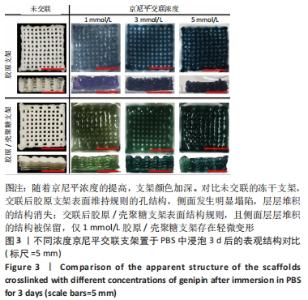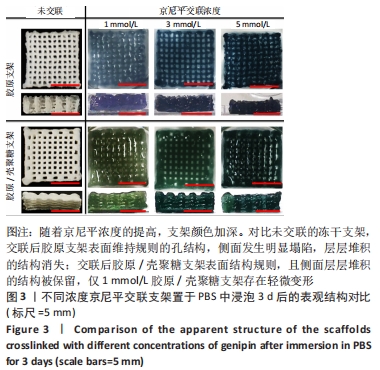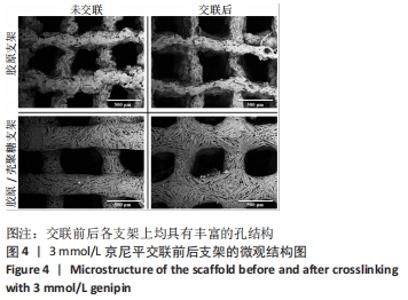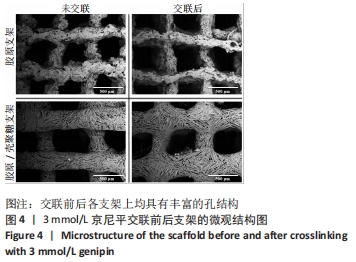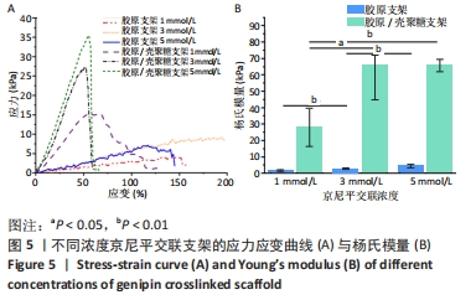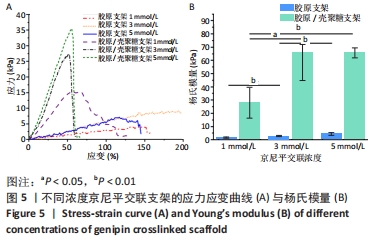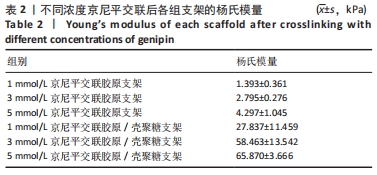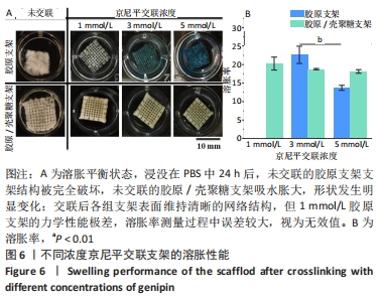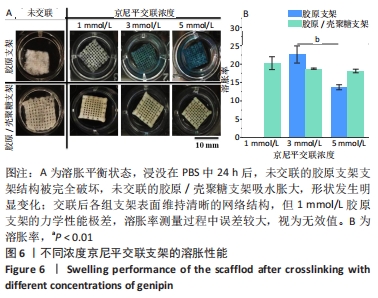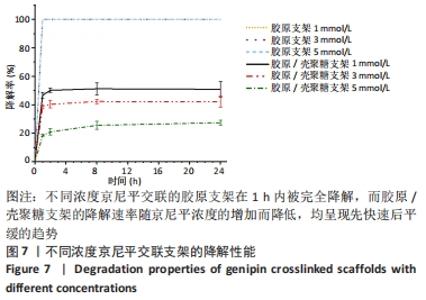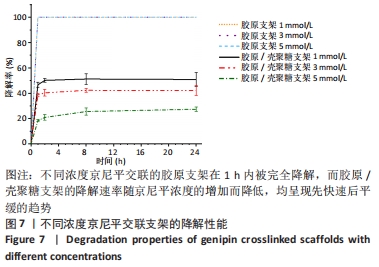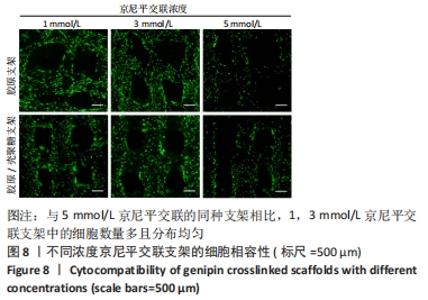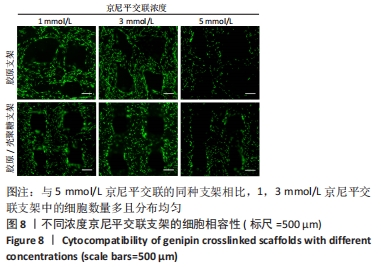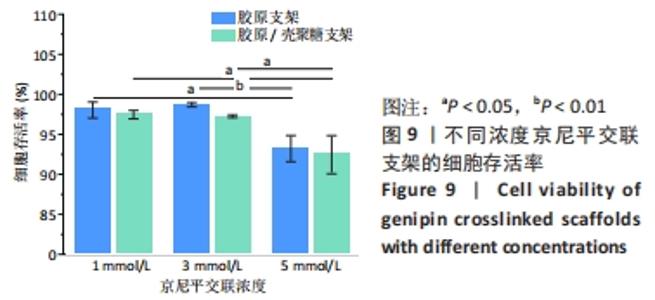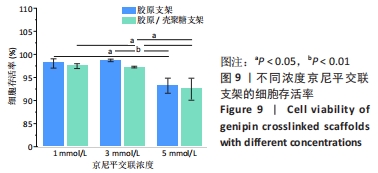[1] 葛振,邹刚,刘毅,等.组织工程支架材料:特征及在组织工程中的应用[J].中国组织工程研究,2018,22(26):4222-4228.
[2] FREED LE, ENGELMAYR GC, BORENSTEIN JT, et al. Advanced material strategies for tissue engineering scaffolds. Adv Mater. 2010;21(32-33): 3410-3418.
[3] RIEU C, PARISI C, MOSSER G, et al. Topotactic fibrillogenesis of freeze-cast microridged collagen scaffolds for 3D cell culture. ACS Appl Mater Interfaces. 2019;11(16):14672-14683.
[4] 郑路,张慧杰.新型胶原基原位水凝胶的制备及其性能研究[J].广东化工,2018,45(14):34-36.
[5] PAL P, DADHICH P, SRIVAS PK, et al. Bilayered nanofibrous 3D hierarchy as skin rudiment by emulsion electrospinning for burn wound management. Biomater Sci. 2017;5(9):1786-1799.
[6] TAN Y J, TAN X, YEONG WY, et al. Hybrid microscaffold-based 3D bioprinting of multi-cellular constructs with high compressive strength: A new biofabrication strategy. Sci Rep. 2016;6(1):39140.
[7] SUN Y, YANG C, ZHU X, et al. 3D printing collagen/chitosan scaffold ameliorated axon regeneration and neurological recovery after spinal cord injury. J Biomed Mater Res A. 2019;107(9):1898-1908.
[8] 李东.低温3D打印技术联合冷冻干燥法制备SF/COL/nHA仿生骨组织工程支架及其性能的研究[D].天津:天津医科大学,2016.
[9] KIM Y, LEE H, KIN GH. A strategy to achieve highly porous/biocompatible macroscale cell blocks, using a collagen/genipin-bioink and an optimal 3D printing process. ACS Appl Mater Interfaces. 2016;8(47):32230-32240.
[10] WEI LN, MIN HG, YEONG WY, et al. Applying macromolecular crowding to 3D bioprinting: fabrication of 3D hierarchical porous collagen-based hydrogel constructs. Biomater Sci. 2018;6(3):562-574.
[11] JITHENDR P, RAJAM AM, KALAIVANI T, et al. Preparation and characterization of aloe vera blended collagen-chitosan composite scaffold for tissue engineering applications. ACS Appl Mater Interfaces. 2013;5(15):7291-7298.
[12] AHN SH, LEE SY, CHO Y, et al. Fabrication of three-dimensional collagen scaffold using an inverse mould-leaching process. Bioproc Biosyst Eng. 2011;34(7):903-911.
[13] RICHARDS D, JIA J, YOST M, et al. 3D Bioprinting for vascularized tissue fabrication. Ann Biomed Eng. 2017;45(1):132-147.
[14] KIM GH, AHN SH, YOON H, et al. A cryogenic direct-plotting system for fabrication of 3D collagen scaffolds for tissue engineering. J Mater Chem. 2009;19(46):8817-8823.
[15] ZHONG SP, ZHANG YZ, LIM CT. Tissue scaffolds for skin wound healing and dermal reconstruction. Wiley Interdiscip Rev Nanomed Nanobiotechnol. 2010;2(5):510-525.
[16] MAZZOCCHI A, DEVARASETTY M, HUNTWORK RC, et al. Optimization of collagen type I-hyaluronan hybrid bioink for 3D bioprinted liver microenvironments. Biofabrication. 2019;11(1):015003.
[17] 倪添雨,张雅洁,刘敏,等.基于胶原蛋白的干细胞3D打印研究进展[J].中国材料进展,2019(6):551-558.
[18] 符锋,赵明亮,李晓红,等.三维打印胶原蛋白-壳聚糖复合支架中大鼠神经干细胞的生长和分化情况[J].中国医药,2017,12(3): 442-446.
[19] 封占增.京尼平、戊二醛或EDC/NHS的交联对构建胶原/壳聚糖真皮支架的作用[D].杭州:浙江大学,2014.
[20] 孙春彦,韩冰.京尼平交联的胶原-壳聚糖支架材料的构建及其性能研究[J].科学技术创新,2016(16):80.
[21] GORCZYCA G, TYLINGO R, SZWEDA P, et al. Preparation and characterization of genipin cross-linked porous chitosan-collagen-gelatin scaffolds using chitosan-CO2 solution. Carbohydr Polym. 2014; 102:901-911.
[22] SHAH R, STODULKA P,SKOPALOVA K, et al. Dual crosslinked collagen/chitosan film for potential biomedical applications. Polymers. 2019; 11(12):2094.
[23] OZBOLAT IT, HOSPODIUK M. Current advances and future perspectives in extrusion-based bioprinting. Biomaterials. 2016;76(37):321-343.
[24] OSIDAK EO, KARALKIN PA, OSIDAK MS, et al. Viscoll collagen solution as a novel bioink for direct 3D bioprinting. J Mater Sci Mater Med. 2019; 30(31):31.
[25] ZHANG YS, KHADEMHOSSEINI A. Advances in engineering hydrogels. Science. 2017;356(6337):eaaf3627.
[26] MACHADO AAS, MARTINS VCA, PLEPIS AMG. Thermal and Rheological behavior of collagen. chitosan blends. J Therm Anal Calorim. 2002; 67(2):491-498.
[27] CHICATUN F, REZABEIGI E, MUJA N, et al. A bilayered dense collagen/chitosan hydrogel to model the osteochondral interface. Emerg Mater. 2019;2(2):245-262.
[28] 邓倩莹,李立华,李毅群,等.溶菌酶、过氧化氢对壳聚糖降解性能的影响[J].化学世界,2005(6):18-20.
[29] 张芳崧.姜黄素可控释生物活性脊髓支架的构建[D].滨州:滨州医学院,2018.
[30] 李珂.新型生物交联剂京尼平的性质与应用[J].中国化工贸易,2011, 3(6):92-93.
|
